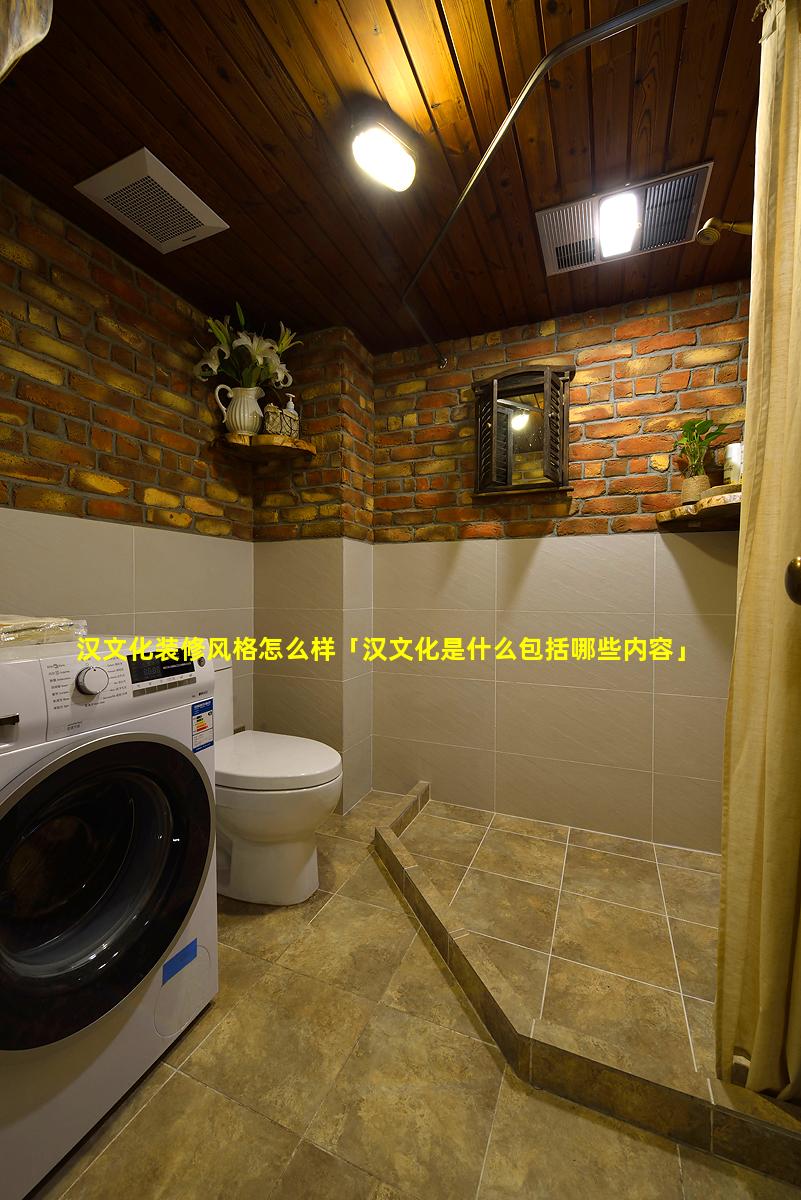1、汉文化装修风格怎么样
汉文化装修风格特点:
1. 色彩以红、黄、黑为主
红色:象征喜庆、热情
黄色:象征尊贵、吉祥
黑色:象征沉稳、庄重
2. 对称布局,庄重大气
家具摆放遵循对称原则,营造平衡和谐感
整体格局规整大气,体现汉朝磅礴庄严的建筑特色
3. 注重装饰,繁复华丽
以龙凤、花鸟、吉祥如意等传统纹样装饰房间
运用雕刻、刺绣、彩绘等工艺,展现精湛的技艺
悬挂书法、字画,增添文化气息
4. 家具以实木为主,线条简洁
采用红木、紫檀等珍贵木材制作家具
造型端庄厚重,线条流畅简洁
桌椅上常有浮雕或镂空等装饰元素
5. 强调礼序,空间层次分明
厅堂、卧房、书房等功能区域划分明确
屏风、隔断等元素用于分隔空间,营造私密性
优点:古典优雅,彰显东方美学
庄重大气,营造威严感
注重文化内涵,提升品味
缺点:造价较高,需要投入较多资金
家具颜色较深,容易显得沉闷
过分注重装饰,可能导致房间显得杂乱
2、汉文化是什么?包括哪些内容
汉文化汉文化是指汉民族在历史发展过程中创造和积累的物质文化和精神文化体系,是中华文化的主体和核心。其内涵丰富,包括以下主要内容:
物质文化语言:汉语(普通话)
文字:汉字
饮食:以米饭、面条和蔬菜为主的饮食文化
服饰:传统汉服、旗袍
建筑:宫殿、寺庙、园林等建筑风格
科技:造纸术、火药、指南针等科技发明
艺术:书法、绘画、音乐、戏剧等艺术形式
精神文化思想:儒家思想、道家思想、法家思想等
宗教:道教、佛教
道德:仁、义、礼、智、信等道德准则
伦理:孝道、忠义、节操等伦理观念
文学:诗词、小说、戏曲等文学作品
节日:春节、清明节、端午节等传统节日
风俗:婚丧嫁娶、祭祀祖先等风俗习惯
核心价值观和谐:追求人与自然、人与人之间的和谐共处
仁爱:以仁慈之心待人接物
礼仪:尊崇礼节、遵守社会秩序
勤奋:勤劳刻苦、不懈追求
孝悌:孝敬父母、友爱兄弟姐妹
历史发展汉文化源远流长,经历了先秦、汉唐、宋明、清等多个历史时期,不断吸收融合其他民族文化,形成独具特色的文化体系。汉文化对中国历史发展和世界文明进步作出了重大贡献。

3、汉文化装修风格怎么样啊
汉文化装修风格特点:
色彩:以红色、金色、黑色为主色调,庄重典雅。
红色代表喜庆、吉利;金色代表富贵、尊荣;黑色代表沉稳、大气。
家具:采用红木、楠木等名贵木材打造,线条简洁大方,雕刻精美。
太师椅、圈椅、八仙桌等典型汉式家具,体现出崇尚传统文化的特点。
装饰品:书法、国画、瓷器、玉器等传统中国元素,营造文化底蕴和艺术气息。
青花瓷、雕花灯笼等特色装饰,增添典雅精致感。
空间布局:讲究对称性、方正性,以中轴线为中心,分隔出不同的区域。
庭院、回廊等元素,借鉴中国古典园林的设计手法,营造幽静雅致的氛围。
整体氛围:庄重典雅、富有文化内涵,体现出中国传统文化的精髓。
融合现代审美元素,在传统中求创新,打造古朴与时尚兼备的空间。
优缺点:优点:
彰显中国传统文化特色,营造古朴雅致的家居环境。
采用名贵木材和精致雕刻,展现出高贵典雅的气质。
融合现代化元素,兼顾实用性和美观性。
缺点:造价相对较高,需要使用优质材料和工艺。
家具尺寸较大,可能不适合小户型。
风格偏重传统,可能不符合现代人的所有审美需求。
适合人群:喜爱中国传统文化,追求古典典雅家居的人士。
经济条件宽裕,注重生活品质的人群。
别墅、大户型住宅等空间较大的业主。
4、汉文化墙创意设计图片
1. Calligraphy and Chinese characters: Incorporate elegant Chinese calligraphy and meaningful Chinese characters that symbolize Han culture, such as the characters for "harmony," "longevity," or "scholarship."
2. Traditional architecture: Feature elements of traditional Han architecture, such as the roofs of ancient palaces, courtyards, or pagodas, to evoke a sense of historical and cultural depth.
3. Folk arts and crafts: Showcase aspects of Han folk arts and crafts, such as papercutting, embroidery, or pottery, to highlight the vibrant and diverse artistic traditions of the Han people.
4. Landscapes and natural elements: Include images of iconic Han landscapes, such as mountains, rivers, or bamboo forests, as they play a significant role in Han culture and literature.
5. Historical figures and legends: Depict famous historical figures or characters from Han mythology and folklore, such as Confucius, Hua Mulan, or the Yellow Emperor, to represent the rich tapestry of Han history and cultural heritage.
6. Traditional festivals and customs: Incorporate scenes or symbols that depict traditional Han festivals or customs, such as the Dragon Boat Festival, the MidAutumn Festival, or the Chinese New Year, to showcase the vibrant cultural practices of the Han people.
7. Han clothing and costumes: Feature illustrations or images of traditional Han clothing and costumes, such as the Tang dynasty's graceful robes or the qipao, to showcase the aesthetic sensibilities and cultural significance of Han garments.
8. Literary and artistic works: Include references to famous works of Han literature, poetry, or art, such as the "Romance of the Three Kingdoms" or the paintings of Zhang Zeduan, to highlight the rich cultural heritage of the Han people.
9. Cultural symbols and icons: Incorporate cultural symbols and icons that are closely associated with Han culture, such as the dragon, the phoenix, or the lotus flower, to represent the collective identity and cultural values of the Han people.
10. Modern Han elements: Combine traditional Han cultural elements with contemporary design aesthetics to create a visually appealing and relevant representation of Han culture in the modern context.
By incorporating these creative design ideas, a "Han cultural wall" can become a vibrant and meaningful representation of the rich cultural heritage and diverse traditions of the Han ethnic group.